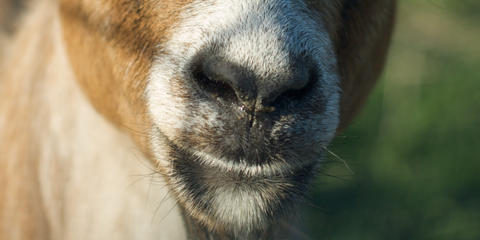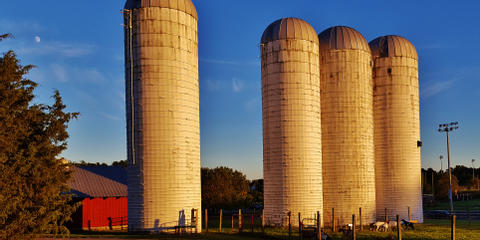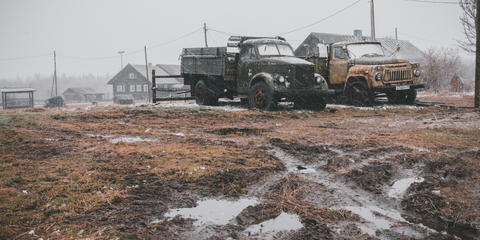Federal funding programs are under review as of 1/27/25. We'll make updates as new info is released.

Small Ruminant Farmer Initiative for Mississippi (SRFI)
Natural Resources Conservation Service
Closed Indefinitely
Our sources indicate that this program is closed indefinitely and unlikely to reopen.
The purpose of the Small Ruminant Farmer Initiative (SRFI) is to improve technical service and program participation in all USDA programs through improved outreach efforts to small ruminant farmers. Ruminants are characterized by their "four" stomachs and "cud-chewing" behavior. The cud is a food bolus that has been regurgitated. There are about 150 different domestic and wild ruminant species including sheep, goats, and red deer. Ruminant animals are further classified by foraging behavior: grazers, browsers, or intermediate grazers. Grazers, such as goats and sheep, consume mostly lower quality grasses while browsers such as deer stay in the woods and eat highly nutritious twigs and shrubs.
We must allow small ruminant farmers to select eligible NRCS practices that are best suited for their particular operations while at the same time low enough in cost to be effective and practical for small ruminant farmer operations to implement and maintain.
In developing and implementing this outreach initiative in Mississippi, NRCS technical practices and programs will help break through potential barriers to participation in USDA programs by small ruminant farmers.
Eligibility
The target audience is defined as any small farm that meets the USDA definition that states a farm with less than $250,000 a year in sales. All Small Ruminant Farmer Initiative funds will be used to help farms with less than $250,000 a year in sales.
Eligible land is pastureland /cut-over or abandoned areas as well as converted cropland. Incidental wooded/cut over areas are eligible when existing vegetation will support grazing/browsing animals.
To be eligible small ruminants must already to present. Small ruminant species targeted for this program are sheep, goats, and red deer. Other species may be eligible based upon circumstances approved by the area office.
All applicants must be willing to follow a prescribed grazing plan, when acceptable.
All participants must be registered in the Service Center Information Management System (SCIMS) or grant permission to be registered in SCIMS.
Existing field office technical standards are available to accomplish conservation planning for this small ruminant farmer initiative.
As needed, NRCS will develop and apply innovative and cost effective technical standards according to policy and place in the field office technical guide.
General practice planning guidelines: To be eligible for fencing, livestock must already be present.
Terms
Ineligible Practices
Ineligible practices are those - In which the purpose is to enhance production without providing an identifiable conservation benefit or addressing a natural resource concern.
Examples include - Water Well (642) used to bring new land under irrigation into a grazing system is an ineligible practice.
Exception: Water Well (642) installed for irrigation livestock water is eligible- If current water sources are inadequate used to increase efficiency of and for the existing irrigation system. If the producer is participating in an approved watershed-wide project that will effectively conserve water.
Fence (382) or Access Control (472) is ineligible if the primary purpose is to - Separate ownership or exclude livestock from transportation networks or residential, commercial, or industrial areas. Exclude deer, hogs, or other wild animals from cropland. ** **
Exception: Boundary fence (property line fence) or perimeter fence is eligible:
On expired or expiring conservation Reserve Program (CRP) land to establish a grazing operation; however, the practice may not be installed until the CRP contract has expired.
On land to protect, restore, develop or enhance habitat for wildlife or to exclude livestock from an environmentally sensitive area, such as a riparian are or wetland.
On land where the fence is an integral part of a conservation management system, such as a planned grazing system that facilitates improved management of grazing land.
Cross-fencing for existing fields is still an eligible practice for small ruminant farmers.
Brush Management (314) - Under the Small Ruminant Farmer Initiative, biological and mechanical (clipping/bush hogging) are the only two eligible scenarios.** (Heavy equipment (dozer) removal of woody vegetation is not eligible in this initiative.)**
It is very important that NRCS does not allow vendor payments and the cash flow of small ruminant farmers to become a barrier to applying practices to the land. NRCS may assist participants in completing and using the CC-36 Form, Assignment of Payment, to work with farmers in paying for conservation work and services provided under the small ruminant farmers program contracts. This tool has been used in the past and is still being used by the Farm Service Agency.
Application Instructions
Please contact your local NRCS service center to apply.
Resources
Related Programs

Farm Storage Facility Loan Program (FSFL)
Farm Service Agency
- Loan
- Infrastructure
- Equipment
- Storage
- Lighting
- Delivery Vehicle
- National
- Oilseeds
- Peanuts
- Pulse Crops
- Hay
- Honey
- Biomass
- Fruits
- Vegetables
- Floriculture
- Hops
- Maple Sap
- Milk
- Cheese
- Yogurt
- Butter
- Eggs
- Rye
- Aquaculture
- Poultry
- Livestock
- Grains

Inflation Reduction Act Assistance for Distressed Borrowers
Farm Service Agency · Closed Indefinitely
- Grant
- Discount
- Socially Disadvantaged
- Disaster Relief
- National
- Any

A Climate-Smart Strategy for the Michigan Foodshed
Star of the West Milling Company, U.S. Department of Agriculture
- Grant
- Climate-Smart
- Beginning Farmers
- Women
- MI
- Wheat
- Dried Beans
- Soybeans

A Comprehensive Evaluation of the Impact of Industrial Hemp and Soil Microalgae Consortium as High-Efficiency Carbon Sequestration Model Plants
Florida A&M University, U.S. Department of Agriculture
- Grant
- Climate-Smart
- AL
- FL
- LA
- Hemp
Details
Organization
Financial Instrument
Grant
Updated April 5, 2024
Image Credit: Pete Markham
This information was gathered from public sources. Ambrook is not responsible for or able to affect the results of any financial programs listed, nor are they responsible for any incorrect information that is listed or is on the hyperlinked external sites. All information is subject to change.
Explore hundreds more programs on Ambrook.